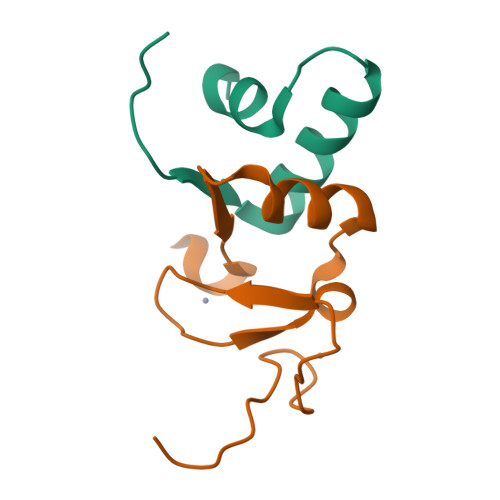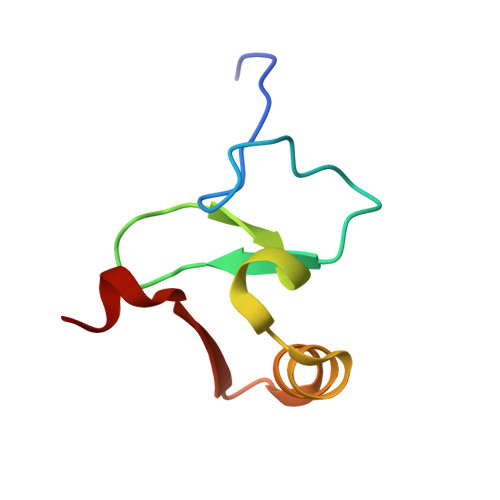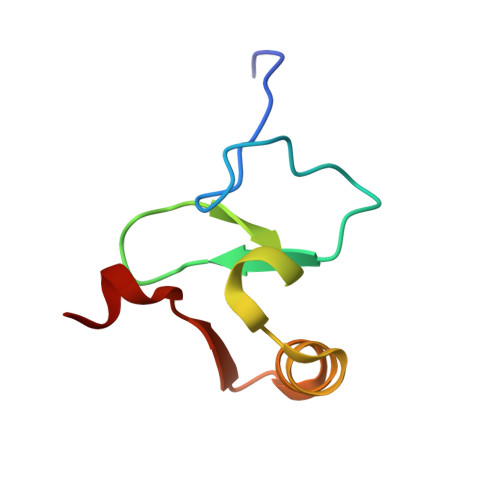Evolutionary Adaptation of the Fly Pygo Phd Finger Towards Recognizing Histone H3 Tail Methylated at Arginine 2
Miller, T.C.R., Mieszczanek, J., Sanchez-Barrena, M.J., Rutherford, T.J., Fiedler, M., Bienz, M.(2013) Structure 21: 2208
- PubMed: 24183574
- DOI: https://doi.org/10.1016/j.str.2013.09.013
- Primary Citation of Related Structures:
3ZPV - PubMed Abstract:
Pygo proteins promote Armadillo- and β-catenin-dependent transcription, by relieving Groucho-dependent repression of Wnt targets. Their PHD fingers bind histone H3 tail methylated at lysine 4, and to the HD1 domain of their Legless/BCL9 cofactors, linking Pygo to Armadillo/β-catenin. Intriguingly, fly Pygo orthologs exhibit a tryptophan > phenylalanine substitution in their histone pocket-divider which reduces their affinity for histones. Here, we use X-ray crystallography and NMR, to discover a conspicuous groove bordering this phenylalanine in the Drosophila PHD-HD1 complex--a semi-aromatic cage recognizing asymmetrically methylated arginine 2 (R2me2a), a chromatin mark of silenced genes. Our structural model of the ternary complex reveals a distinct mode of dimethylarginine recognition, involving a polar interaction between R2me2a and its groove, the structural integrity of which is crucial for normal tissue patterning. Notably, humanized fly Pygo derepresses Notch targets, implying an inherent Notch-related function of classical Pygo orthologs, disabled in fly Pygo, which thus appears dedicated to Wnt signaling.
Organizational Affiliation:
MRC Laboratory of Molecular Biology, Cambridge Biomedical Campus, Francis Crick Avenue, Cambridge CB2 0QH, UK.






































